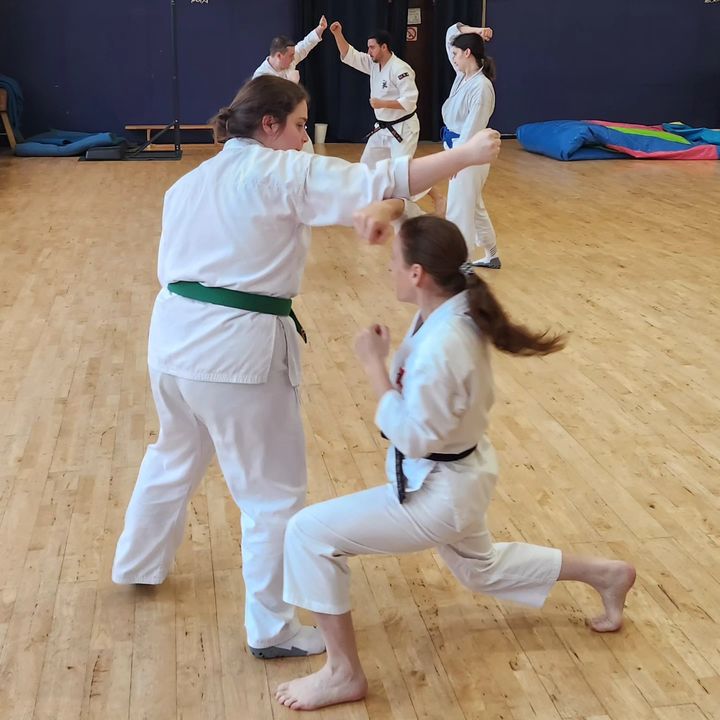“I’m interested in learning a martial art, but I’m not sure if I’m fit enough to keep up.”
“I’ve seen kickboxers/taekwondo/karate/MMA fighters on TV – I could never kick that high!”
“It’s alright if you’re strong enough to punch hard, but look at me, I couldn’t hurt a fly!”
These are all things we’ve heard over the years. And they’re all valid concerns. But I’m here to tell you that they shouldn’t be the thing that stops you.
You are not a TV star
Let’s take the simple one first. The people you see on TV are the ones that have been practicing for a long time. I’ll bet you that most of them couldn’t kick head height when they started. Some probably couldn’t even reach stomach height.
The difference between them and you is years of practice, not some inherent “ability”.
You don’t have to be fit…
So you’re not fit right now. No problem. Give us a few months of your time and effort and we can change that. A little bit at first, and then a little bit more – slowly and surely you will improve.
The first class you come to will be hard, I won’t lie. But most of that will come from making your body and mind do things they aren’t used to.
You won’t die. You’ll take the class at your own pace, and if you need a break you’ll say so, and rest for a few minutes, and then join back in.
After the first few classes you won’t even notice the time passing, I promise! You’ll be too busy having fun and learning lots. And the skills that you pick up will help to compensate for any lack in your fitness.
Gradually, over time, you’ll find the movements easier. I’m not claiming that we’ll make you the fittest person on the planet – but you’ll feel good in your own body, and walk with confidence, and yes, you’ll be fitter than when you started.
Of course, like all forms of exercise, what you get out will depend on what you put in. Training once a week will help, but training twice a week will help more.
Plus you’ll get to spend more time with these fun people:

… but it helps
The martial arts are a physical discipline. Being fit will give you an advantage. If you can keep going when your opponent is tired, you can push past their defences – or run away.
Aside from pure stamina, there are a few things which will help. If you want to get really good at the martial arts, you should probably be training these outside of the dojo as well – cross train in another discipline, work out at the gym, whatever floats your boat.
Flexibility, balance and coordination, and strength are all useful.
Flexibility gets you better dodging, better attacking, a general better range of motion. I’m not saying you need to kick head height or do the splits, but be able to look behind you without turning completely, or lift your knee to your chest, or flex your ankles and pull your toes back to kick.
Balance and coordination help with the whole “not falling over” thing, and with being able to put your limbs where you wanted them to go.
Strength – last on my list for a reason – will add power to your movements. But power is nothing without skill, which is why this is last on my list. The most helpful strength to have is your core muscles, your legs – the connection to the floor. If you can increase the amount of force you generate from the floor, and the amount of it that travels up through your body without getting lost, all of your movements will benefit.
Shorinji Kempo and Fitness
Related to all of this, you might be wondering what there is in Shorinji Kempo that can help you.
First, a philosophical point. Train to your own level. We believe that you should put all of the effort that you can into training – but not more.
That means that if you’re young and fit and healthy then you put lots of effort in. If you’re old or unfit or injured then you put in what is appropriate for you.
Second, class content. All our classes start with a warm up to prevent injury. This tends to be a mixture of cardio, flexibility, and strength exercises (with a martial twist, of course!). The “basics” section is also usually high energy, and will move your body through large ranges of motion and improve your balance and coordination.

The second half of the class will often tax your brain more than your body, although your body will definitely be involved!
At the end of some classes we also do “seiho”, which is all about making your body work better – pressure point massage, assisted stretching, and many other things.
So, in summary, we will make you work hard, but no harder than you can cope with. We will improve your general fitness, flexibility, strength, balance and coordination. And all of this will happen in a friendly group of like-minded individuals, while you have fun and learn a useful skill.
And that, dear friends, is why I will be doing Shorinji Kempo until my dying breath.

